
One of the first flowers to bloom in spring, purple sweet violet flowers bring a subtle and sweet aroma to the garden as it wakes from slumber. With edible and fragrant flowers as well as edible... more->
We spent 13 years building an abundant fruit forest, annual veggie beds, perennial medicinal herbs, and a healthy mixed hardwood-coniferous forest and now we've sold our property to the next stewards so that we can begin a new homesteading project in Vermont closer to our best friends and their kids.
Don't worry - we plan to keep this website up and running so that our customers can reference what we've written about our plants!
We'll let you know once we re-start a farm in Vermont!

One of the first flowers to bloom in spring, purple sweet violet flowers bring a subtle and sweet aroma to the garden as it wakes from slumber. With edible and fragrant flowers as well as edible... more->

This is one of our favorite spring-producing plants. A biennial, Angelica shoots out of dormancy in winter and grows quickly to its full height, up to six or seven feet. In the parsley family,... more->

This is the orange flowered variety of daylily. So pretty in the garden or on a plate! more->
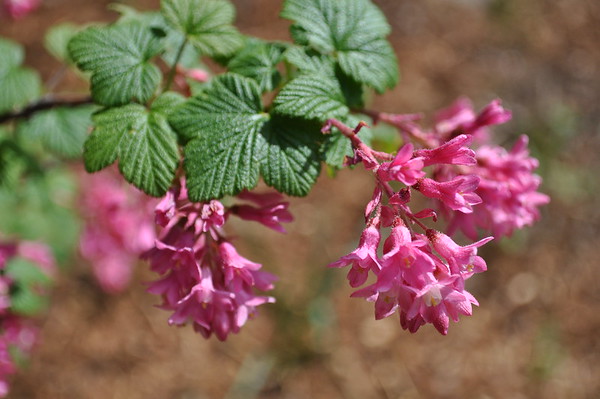
This is one of the earliest blooming and showiest shrubs in the Pacific Northwest! Red flowering currant is a very popular plant for a variety of reasons. The large clusters of pink-red flowers... more->

Common milkweed is very similar to our native showy milkweed, but native to eastern North America. This species is just as showy as the showy milkweed in our garden but a little more pink than... more->
Black twinberry, native to Oregon, is an excellent hummingbird plant. This deciduous shrub can grow up to 6 feet tall and 10 feet wide. It can grow in sun or part shade. Flowers are bright... more->
No herb garden is complete without this fragrant and savory leaf to add to pasta sauce, soup stock and more. Sage also produces beautiful and edible pink flowers that attract pollinators.... more->

With beautiful blue flowers clustered atop two foot tall stalks, hound's tongue is named for the shape and texture of the leaves that form a rosette at the base of the plant. It's native to the... more->

We have had great success growing this native penstemon in our gardens. A perennial with striking purple flowers stalks that bloom in mid-summer, Cascade penstemon is easy to grow in our climate.... more->
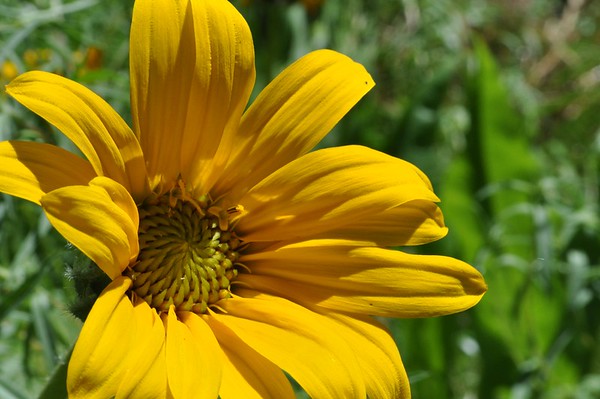
A sunflower-like native wildflower, narrow leaved mule's ears grows in grasslands and meadows in the fields and foot hills of the Willamette Valley. It is an herbaceous perennial and each year... more->

A beautiful wildflower, our native columbine blooms yellow and red. In garden soil and part shade, columbine may grow up to 3 feet tall and wide. Delicate flowers bloom in late spring. Great... more->
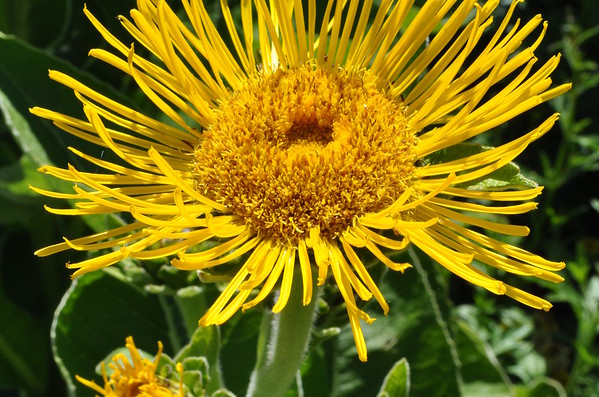
This sturdy herbaceous perennial bears giant leaves, stems up to 6 feet tall, and bright yellow flowers several inches across. Bees and other insects are always buzzing around to sip the nectar... more->
'Invicta' produces high yields of large dessert quality green fruit, and is considered by many to be the best variety in North America. It has excellent flavor, is mildew resistant, and is more... more->
This native member of the sunflower family spreads quickly in poor soil with very little care and without summer irrigation. It has spreading blue-flowered aster blossoms late in the summer to... more->

This perennial produces massive flowering stalks several feet tall that smell sweet and attract bees. Native to wetlands in the Willamette Valley and the Pacific Northwest, it performs really... more->
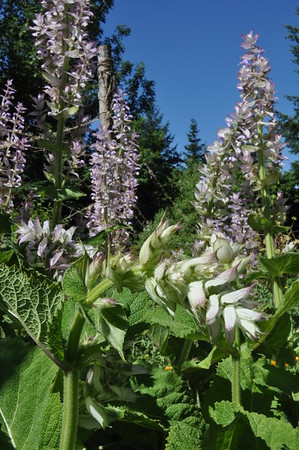
With the sweet and spicy aroma of grapefruit and pine, clary sage brightens our day with its scent as well as with its spikes of white and purple flowers. This biennial starts out the first year... more->

This is the easiest to grow of all the Echinacea species in our area. It is very cold hardy, and sends down a multitude of pencil-sized roots. The bees and butterflies frequent the bright purple... more->

Although some know it as California ginseng, elk clover, or spikenard, I think Oregon ginseng is quite fitting for a plant that inhabits shady, moist seasonal creeks in deep coniferous forests as... more->
Jostaberry is a cross between european currants and gooseberries, taking the best from both. It is a thornless shrub producing dark fruits with a mild black currant flavor. The fruit is larger... more->
Coyote brush is an evergreen shrub native to Oregon. It is drought tolerant, deer tolerant, and easy to grow. Fast growing, it can grow as high as nine feet but usually is shorter. It responds... more->
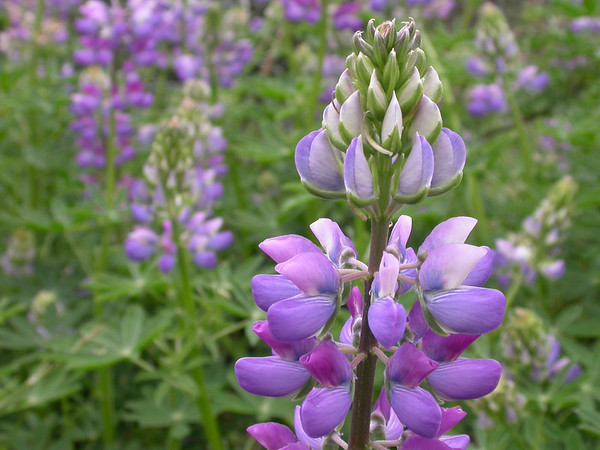
This perennial produces gorgeous purple flowering stalks in full sun or part shade. A Willamette Valley native, it tolerates drought and poor soil with root nodules that fix nitrogen. Deer... more->

Oregon stonecrop has glossy green leaves that look like little elephant toes. I think it has the best-tasting leaves of any native Sedum. more->

Yarrow is a flowering perennial in the sunflower family. Feathery green basal leaves are present in our climate throughout the year. Taller leaves begin to grow in early spring, and flower stalks... more->
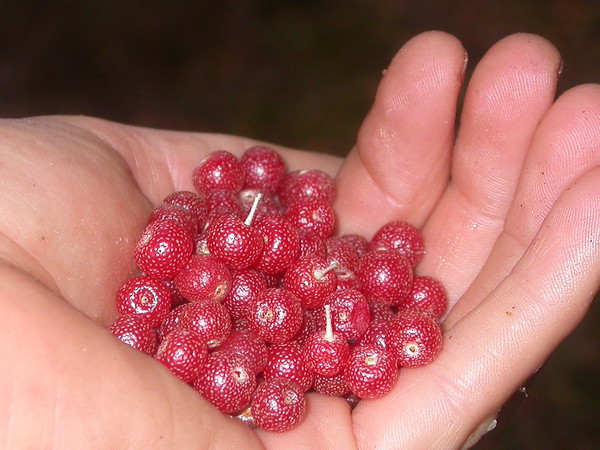
Goumi plants are well known in the Northwest permaculture community for being great nitrogen fixing shrubs with a much lower chance for spreading by birds. These shrubs can grow up to 12 feet or... more->

A showy evergreen shrub, Jerusalem Sage is an easy to grow plant for a sunny location. Deer tolerant and drought tolerant, it grows quickly but never gets more than a few feet high when blooming... more->
A broad leaf evergreen ground cover, kinnikinnick is very hardy. It thrives in partial shade and will spread along the ground or grow along a slope, providing some erosion control. Drought... more->
'Grosso' is a hybrid Lavindin-type variety that has a dark purple bloom, grey-green leaves, and excellent fragrance fresh or dried. This variety is often used for commercial production because of... more->
This native rose shrub has the largest pink flowers of the Oregon species. They perfume the woods when they bloom in May! more->

A perennial in the pea family, false indigo sends up 3-foot tall inflorescences with breathtaking deep blue pea flowers. Though not as good as true indigo, a blue dye can be made from the leaves... more->
Edible flowers and leaves make muskmallow a great perennial for a sunny garden. It starts growing in early spring and blooms a deep pink in late spring through summer. Our plants bloom profusely... more->

Native to sunny meadows and dappled shade of open woodlands in the Willamette Valley, meadow checkermallow created a gorgeous display of light pink blossoms up to 6 feet tall. In the shade it may... more->
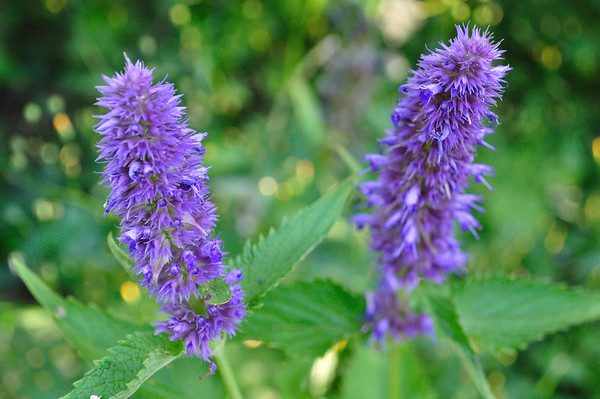
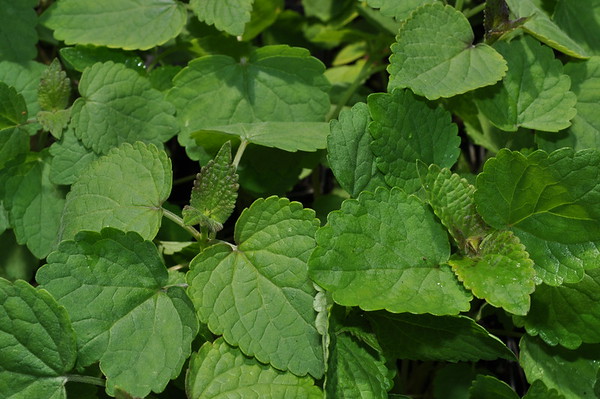
A great addition to any perennial garden, anise hyssop is a beautiful summer blooming perennial with edible leaves and flowers. The leaves, when steeped fresh or dried, make a refreshing minty... more->
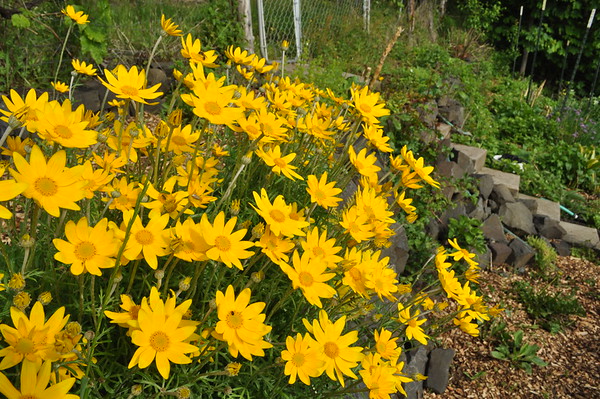
A beauty for a native wildflower garden, Oregon sunshine lives up to its name, bearing profuse quantities of deep yellow blooms. Gray green foliage is ornamental. This plant blooms no taller than... more->
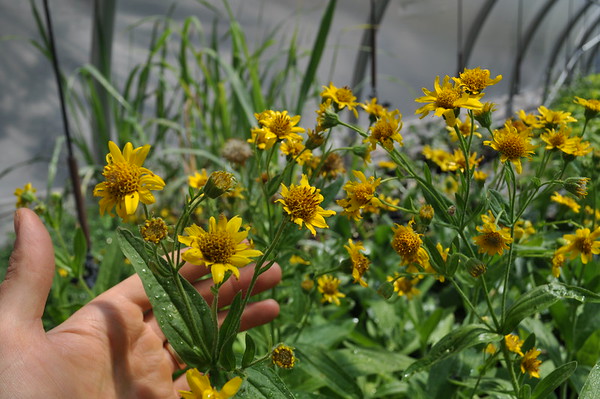
This arnica is native to western North America and is as potent as Arnica montana. It is a low growing, slowly spreading herbaceous perennial that prefers full sun to part shade and... more->
'Vera' is a cold-hardy heirloom English lavender. It is considered the original and true variety traditionally grown at high elevation in the French alps. In our garden, 'Vera' produces tall... more->
Clustered wild rose is native to the Willamette Valley and other parts of the Pacific Northwest. It is a spreading woody shrub, growing up to 6 feet tall. It is a great and easy to grow wildlife... more->

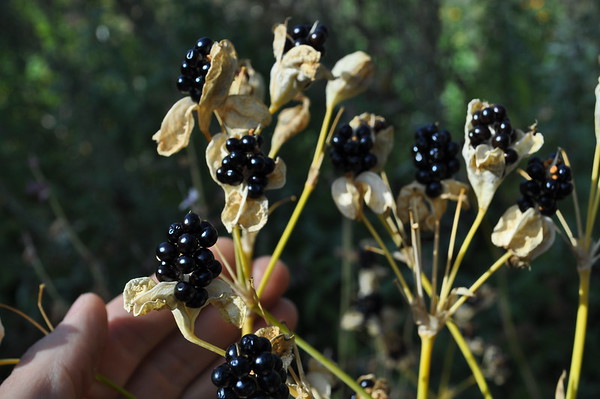
This leopard lily has now had its botanical name changed to Iris domestica. This is somewhat more accurate as it is an iris, not a lily. Leaves look like gladiolus and grow just over a... more->
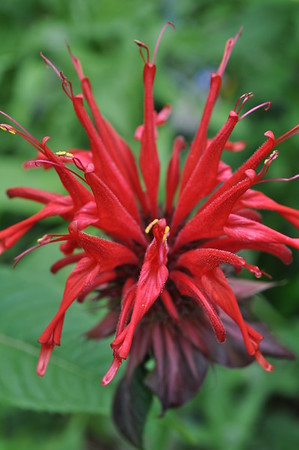
This variety produces 3-foot tall displays of crimson red inflorescences composed of tubular flowers. It is a sight to see! A favorite for hummingbirds. more->

We love this late spring blooming native wildflower that we often find on the edges of meadows. In the hollyhock family, this perennial grows only about a foot to two feet tall at most. It sends... more->
Native to moist and sunny meadows and slopes of the Pacific Northwest, this perennial herb makes a fine garden specimen. Bees and butterflies flock to its showy purple flower spikes held above... more->
Native throughout most of the northern hemisphere, alpine strawberry is that amazingly sweet wild strawberry you remember from childhood. Small fruits pack superb flavor. Plants are vigorous in... more->
This hardy deciduous shrub is easy to grow in our climate. Deer tolerant and drought tolerant, it blooms for a very long time through spring into fall. We have two varieties- one that blooms... more->

Viking has been selected for delicious flavor raw and cooked. Some seedlings can be extremely astringent but this one will just give you a little pucker. more->
Lovage is an excellent addition to a perennial vegetable garden. Bursting forth in spring, this plant can shoot up to six or seven feet tall each year. The aromatic leaves have a flavor similar to... more->

Rugosa rose is a suckering shrub native to Asia. It has large and beautiful blooms and the largest rose hips of any rose we know. The rose hips are high in vitamin C and can be eaten fresh or... more->
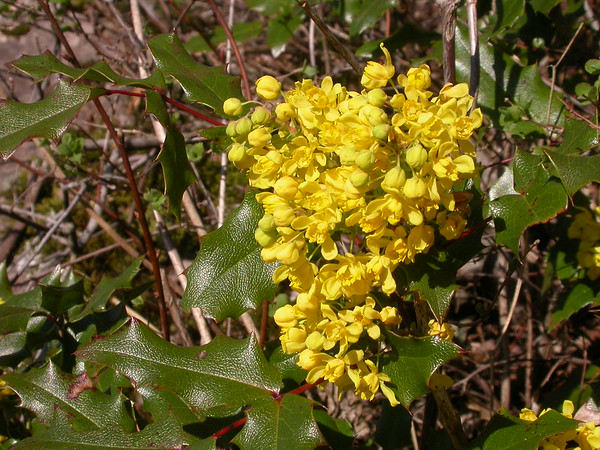
Tall Oregon grape is a woody perennial shrub in the barberry family that is tough enough to survive in many conditions and yet provides edible and medicinal yields. It grows 2-7 feet tall in well... more->

This wild variety of beebalm produces showy light pink flower clusters on two foot tall stems. more->